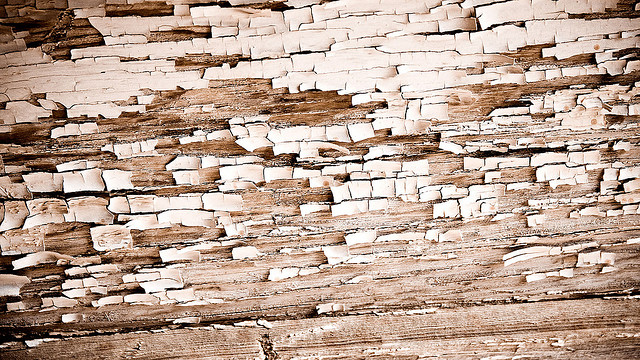
“Peel” by Will Keightley is licensed under CC BY 2.0
Yesterday, I wrote about getting off on the right foot–you know, starting well. Because really, that’s one of the most critical things in life isn’t it? Starting well? If you start poorly in any endeavor, chances are you’re not going to bring it around and end up with great results. It’s just one of those rules of life: we need to make good first impressions, we need to get off to a good start . . . we need to start on the right foot . . . or we’re not going to go very far.
And let me prove it. See, I’m going to breeze through a few real-life lines from some job applications and you decide if these people went terribly far after making this kind of first impression.
OK, first off, here’s a lady who wrote, in the SKILLS section of her job application, that, and I quote, “My twin sister has an accounting degree.” End quote. Yeah. Her TWIN sister. Not just a little sister or an older sister. It’s her TWIN. And we all know how twins are supernaturally or magically or whatever bonded to each other, right? I mean really, there are those stories about twins raised in different homes with no knowledge of each other who end up marrying similar people and naming their children the exact same names. So, having a twin sister with an accounting degree is just like having one yourself. I mean, it’s almost a scientifically proven fact.
Or, what do you think about the first impression this guy made when he wrote in the section called “negative traits”, and I quote “I am very bad about time and don’t mind admitting it. Having to arrive at a certain hour doesn’t make sense to me. What does make sense is that I do the job. Any company that insists upon rigid time schedules will find me a nightmare.” Yeah, I know if I were looking for help, he’d be on my “must-call” list. Because I like his gritty honesty. And his carefree, artist’s disposition.
Anyway, life’s all about first impressions, right? And neither of those folks made terribly good ones. Yeah, life’s all about starting well. And the reason is simple: it’s tough to finish well if you don’t start well.
And that applies to everything from job applications to dating relationships to job interviews to home improvement projects. Starting well can make all the difference in the long-run.
Now yesterday, we talked about specific stain-blocking primers that should be used in some cases. How certain jobs you might tackle might need one of these specialty primers to ensure long-lasting results–like we said, it’s all about starting well. Start well and you won’t struggle with your project. Start poorly and you’ll have a mess.
Today we’re going to talk about another scenario when primers make good sense: exterior wood surfaces. Now, if these are stainable woods . . . that’s another topic for another day. What I’m talking about here are the exterior woods that you would typically paint.
And right now, as I mentioned yesterday, there’s ad on TV that claims you can basically quit using primers as long as you buy this apparently new and amazing paint product. However, there are a couple things to note here. First off, it’s not a new product or new technology–it’s been around for years–it’s just good marketing that’s making it seem new and exciting. Secondly, remember that those ads are 30 second spots. You can’t say everything you should say in a 30 second spot. Sure, there are times when primers can be skipped–and I’ve got products at RepcoLite that you can use just like that apparently new and amazing paint we see on TV. However, there are times when you can’t skip them–or at least you shouldn’t–not if you want to get your project started on the right foot.
And one of those times when primers really pay for themselves in the long run is when you’re painting bare exterior wood. A high quality latex paint over top of bare wood–with no primer–may lay on nicely and look great. But the problem is that it really can’t penetrate into the wood–it’s latex and that’s just not how latex products work. It’ll sit on the surface. Before long, the moisture that penetrates the wood from rain or even dampness in the air, will start to cause that paint to chip and peel. And once that starts, you’ll have a mess.
But, if you prime that wood with a high-quality oil based product, you’ll have much less failure. Primers are specifically MADE for these situations. They have characteristics that are DIFFERENT from paint–think about that for a minute. Primers are fundamentally different in make up from paint for a reason–they have a different job to do. Primers act as an intermediary between the wood and the topcoat. Primers will seal, hide and bind wood fibers to make the surface more uniform. And this allows the paint to adhere better. A quality primer will also improve your paint’s ability to resist surface moisture. As a result, you’ll have less peeling, less mess, longer lasting results and a better, happier ending.
So take a lesson from those folks we talked about earlier. Remember to get off on the right foot–no matter what it is you’re doing: meeting someone new, interviewing for a job, or painting your exterior trim. Get off on the right foot and you’ll end up happy at the finish line.

